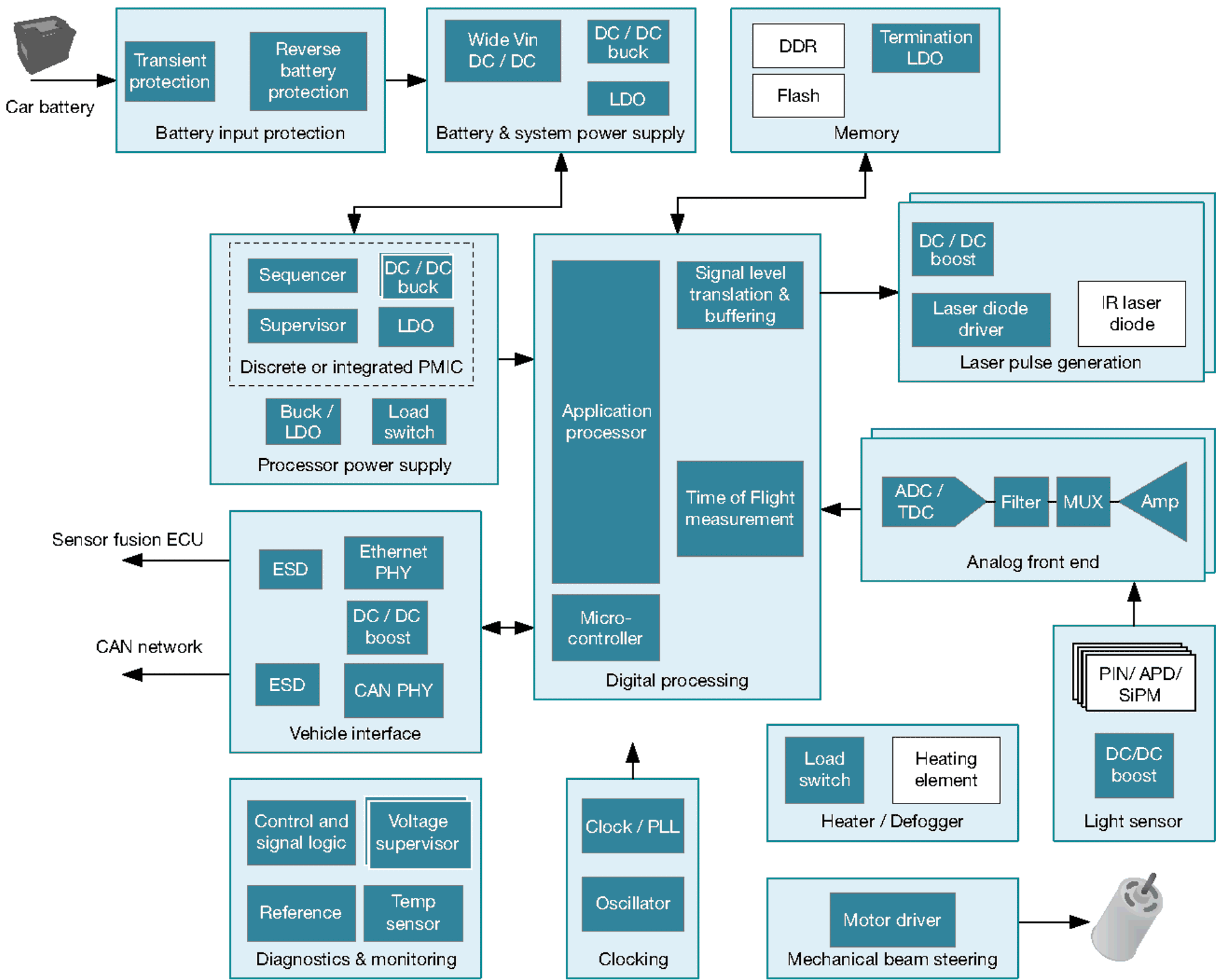SLYY150B may 2020 – august 2023 OPA855 , OPA857 , OPA858 , OPA859
The LIDAR subsystem
Figure 3 shows the entire functional LIDAR subsystem, including the signal chain, power,interface, clocking and monitor/diagnostics subsystem. The main subsystems of the LIDAR signal chain comprise a transmitting system (Tx), a receiving system (Rx) and a custom digital-processing system to extract point-cloud information. TI offers device options for the function blocks shown in teal.
 Figure 3 LIDAR subsystem showing signal chain,
power, interface, clocking and monitor/diagnostics subsystem.
Figure 3 LIDAR subsystem showing signal chain,
power, interface, clocking and monitor/diagnostics subsystem.LIDAR System Integration
For systems that require high density on further integration, TI offers integrated LIDAR amplifiers that handle the connection from the photodiode directly to an ADC or TDC. These amplifiers include the LMH32401 and LMH32404 for ADC based systems and the LMH34400 for TDC based systems. These devices are beneficial to LIDAR applications because they integrate the high-speed TIA compensation network as well as include features such as ambient light cancellation, input overcurrent clamp protection, and multiplexer mode. The ambient light cancellation circuit allows for better detection of input current by removing DC ambient light signals and saves board space as it can be used instead of AC coupling between the photodiode and amplifier. The input protection clamp absorbs and diverts excess current to the positive supply when the amplifier detects its nodes entering a saturated condition allowing the amplifier to return to a linear state much faster and limits pulse extension to less than a few ns. The integrated LIDAR TIAs have integrated ouput switches which allow for multiple photodiode and amplifier channels to connect to fewer ADC/TDC channels and thus eliminate the need for a discrete multiplexer. This allows for multiple sensors to be used while saving board space that would ordinarily be taken with multiple ADC/TDC channels.